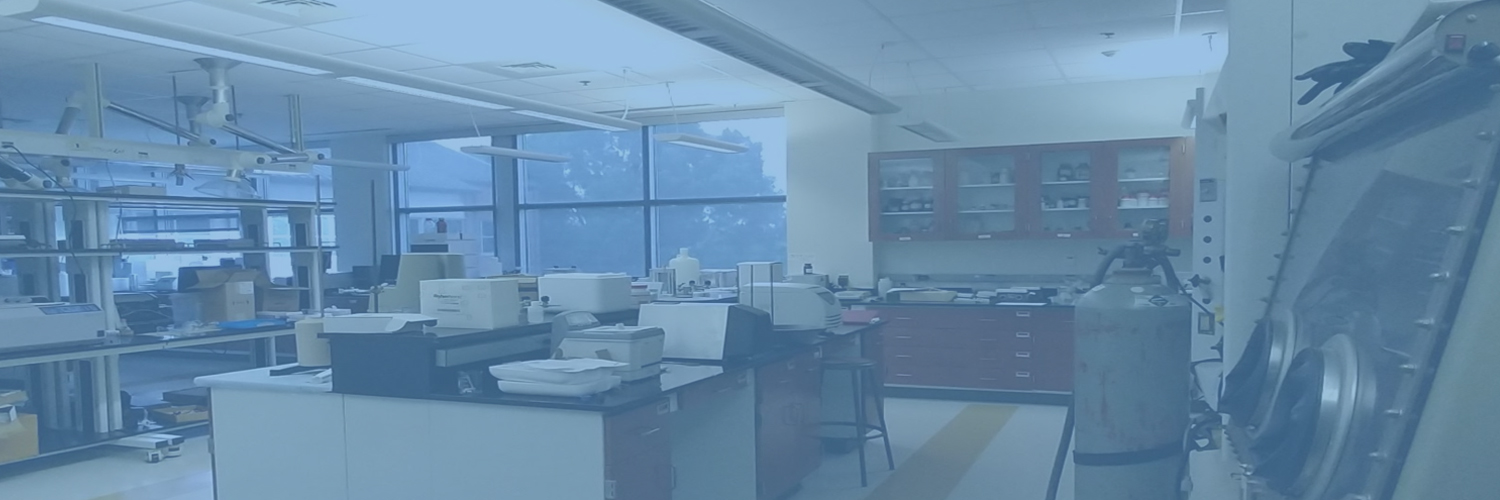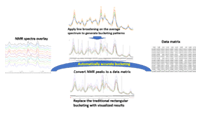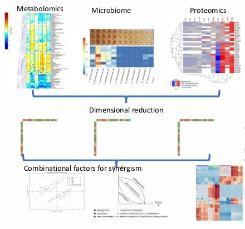


Metabolomics is a cutting-edge area that his been widely applied in various areas, especially in human disease mechanisms and potential biomarker studies. However, due to the interdisciplinary requirement among data scientists, analytical chemists, and biochemists, the biomarker validation methods are not very well-developed which significantly limits the application of metabolomics especially for researchers with limited instrumentation and data science expertise. In this project, we are working on developing novel algorithms on metabolomics biomarker discovery and validation. Metabolomics is a cutting-edge area that can be a powerful tool for monitoring the environmental toxin's affections on animal and human health. However, the real-life applications are still in their infancy which is mainly due to the complexities of the metabolomics process. One of the main problems for metabolomics applications in health studies is the lack of models that considers the instrumentation errors and biological data into models, which lead to overfitting problems. We propose to develop novel automatic methods which will include all the data reliability information using machine learning methods and aim to develop novel approaches to apply metabolomics to monitor environmental problems. The study is also expected to predict potential problems under single and various combinational environmental toxins to animal and human health
Selected publications:
Grant:

Our project will develop a metabolomics model to discover the sea anemones metabolomics response to combinational environmental stress. It is expected that the synergistic harmful effect of two or more environmental factors to the health of sea anemones will be discovered in metabolomics studies. Therefore, our study will help to predict the potential serious environmental issue when several regular environmental factors appear simultaneously even in relatively low concentrations. The red tide blooms and Vibrio in the Gulf of Mexico have drawn wide concerns about environmental pollution and affect local residences via inhalation or ingestion . Red tide is caused by harmful algal blooms (HABs) and the Karenia Brevis which produces brevetoxins is the major concern of the Florida red tide. Traditionally, the cell monitoring of K. Brevis and the brevetoxins monitoring using shellfish extracts have been applied for environmental monitoring, but the red tide toxicity prediction remains difficult. An early warning system before the red tide blooms to monitor the brevetoxins and Vibrio is critical to red tide mitigation since prevention and early treatment are more effective than treatment methods after the blooms. Novel high omics methods such as metabolomics using big data approaches have been initialized in the environmental stressors studies, however, are rarely investigated in marine biology studies.
Selected publications:
Grant:
 Area 1: We built a team with experts in four different areas and developed a novel and highly practical approach to integrating data science, multi-omics, system biology, and additive manufacturing for the Theranostics of IBD. Our overarching hypothesis is that, by identifying key biomarkers of IBD and their interactions and progression, a theranostic engineered bacteria can be used as an effective mechanism to diagnose and treat IBD, and can be safely delivered to the human GI tract with the use of a smart 3D printed pill. The study is expected to develop an effective diagnosis tool and subsequent treatment to control the disease without side effects. The development of the theranostic will allow millions of people, including military, currently living with IBD to control their symptoms effectively and live a healthier and happier life.
Area 1: We built a team with experts in four different areas and developed a novel and highly practical approach to integrating data science, multi-omics, system biology, and additive manufacturing for the Theranostics of IBD. Our overarching hypothesis is that, by identifying key biomarkers of IBD and their interactions and progression, a theranostic engineered bacteria can be used as an effective mechanism to diagnose and treat IBD, and can be safely delivered to the human GI tract with the use of a smart 3D printed pill. The study is expected to develop an effective diagnosis tool and subsequent treatment to control the disease without side effects. The development of the theranostic will allow millions of people, including military, currently living with IBD to control their symptoms effectively and live a healthier and happier life.
Area 2: Metabolomics has been widely applied in human health studies. In collaboration with researchers at the health center at various universities, including University of South Florida, Florida State University, and Ohio University, we have combined metabolomics with microbiome and carried out various types of research on aging, obesity, diabetes, and Alzheimer's diseases.
Selected publications:
Grants:
 Area 1: Pharmaceuticals and personal care products (PPCPs) are receiving emerging concerns due to their wild usage all over the world and their persistent presence in the aquatic environment. The current commonly used wastewater treatment methods, such as nano-material adsorption and membranes process, are costly and difficult to scale up thus block the practical application. TiO2-based photocatalysis has shown great potential as a low-cost, sustainable, and green technology for wastewater treatment. However, TiO2 is mainly activated by UV lights (only 5-7% of the solar radiation), which is a critical limiting factor in increasing the photodegradation efficiency. Therefore, improving the energy conversion rate is one important approach to increase the photocatalytic performance in wastewater organic compounds treatment. Ruthenium dye N3 and other organic dyes were successfully utilized in dye-sensitized solar cells in the past decades, but only a few applications in wastewater treatment were reported which was also limited by the high toxicity of Ru and other organic dyes.
Area 1: Pharmaceuticals and personal care products (PPCPs) are receiving emerging concerns due to their wild usage all over the world and their persistent presence in the aquatic environment. The current commonly used wastewater treatment methods, such as nano-material adsorption and membranes process, are costly and difficult to scale up thus block the practical application. TiO2-based photocatalysis has shown great potential as a low-cost, sustainable, and green technology for wastewater treatment. However, TiO2 is mainly activated by UV lights (only 5-7% of the solar radiation), which is a critical limiting factor in increasing the photodegradation efficiency. Therefore, improving the energy conversion rate is one important approach to increase the photocatalytic performance in wastewater organic compounds treatment. Ruthenium dye N3 and other organic dyes were successfully utilized in dye-sensitized solar cells in the past decades, but only a few applications in wastewater treatment were reported which was also limited by the high toxicity of Ru and other organic dyes.
Area 2: Natural compounds have drawn high attention in cancer treatment due to their compelling performance and low toxicity. Though the synergism effect for the combination of natural compounds is critical in drug discovery, the traditional trial-and-error way to discover possible pure compound synergetic combinations has very low efficiency due to the high possibility of combinations. However, the synergistic combinations and potential toxicity combinations in plant extracts are hard to identify. Garlic scape may have the potential to prevent development of diabetes by modulating carbohydrate digestion and glucose uptake in intestine. Measuring carbohydrate digestion and glucose uptake will produce the efficacy of garlic scape extract in intestine as the potential functional food that has anti-diabetic effect. One expected result is that the link between cancer metabolomic perturbation under different treatment and plant compounds profilings will provide directions to narrow down the most synergistic combinations in plant extract.
Selected publications:
Grant:
© Florida Institute of Technology, All Rights Reserved